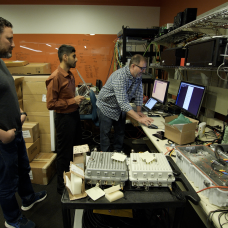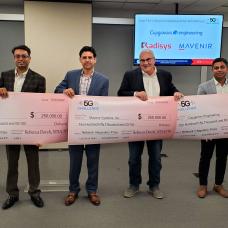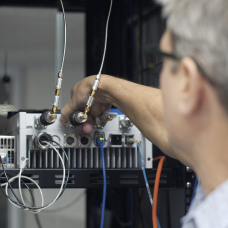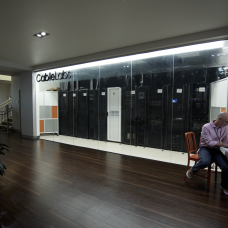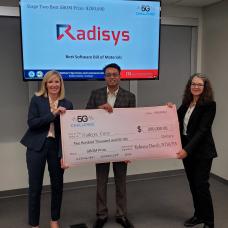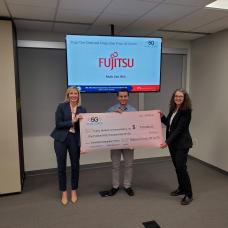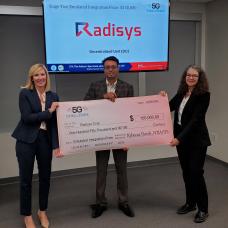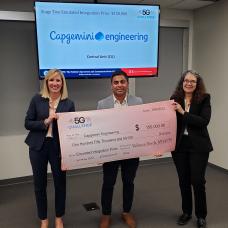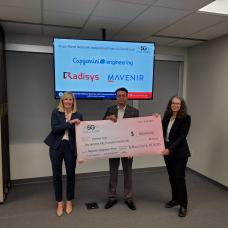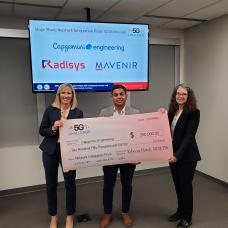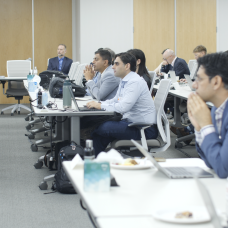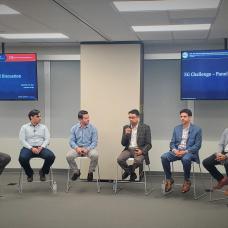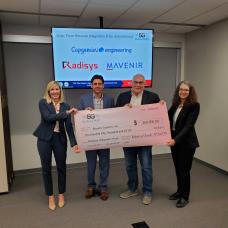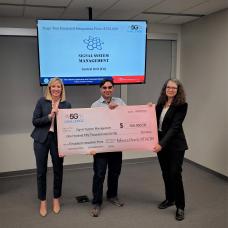Overview
The 5G Challenge Event: RAN Subsystem Interoperability comprised the first of two 5G Challenge competitions. In this first-year event, NTIA/ITS offered a $3,000,000 prize purse to contestants who successfully integrated hardware and/or software solutions for one or more of these 5G network subsystems:
- Central Unit (CU)
- Distributed Unit (DU)
- Radio Unit (RU)
See the archive section of the Resources page for the official 5G Challenge 2022 Event Rules.

5G Open RAN Network Diagram
Stage One – White Papers
During Stage One, contestants applied to participate by submitting a white paper, which required contestants to document 3GPP and O-RAN Alliance specification compliance and subsystem test reports. The most qualified contestants were accepted through early-bird and final submittal phases.
Stage Two – Emulated Integration
In Stage Two, each contestant subsystem was evaluated independently with a wrap-around emulator and test harness. The contestant subsystems underwent testing to evaluate basic functionality and standards conformance. Stage Two challenged the contestants, host lab, and test software because 5G test software and some 5G interface specifications are still emerging.

Stage Two: Wrap-around emulators evaluate individual vendor devices
Each contestant whose subsystem(s) achieved a basic level of functional performance qualified for an Emulated Integration prize of $150,000. Of the contestants who qualified for an Emulated Integration prize, the contestant with the best Software Bill of Materials (SBOM) also received a $200,000 prize.
SBOMs facilitate improved security via vulnerability management by identifying dependencies, patch requirements, license requirements, and risk of cyberattack. Stage Two Contestant SBOMs were evaluated for completeness, intelligibility, depth of dependencies listed, disclosure of known unknowns, and compliance to SBOM format standards.
Stage Three – Network Integration
Stage Three integrated multiple vendor subsystems into an end-to-end network. The final Stage Three network successfully integrated subsystems from five different vendors: user equipment (UE), radio unit (RU), distributed unit (DU), central unit (CU), and Core. In true plug-and-play fashion, contestants approached network integration with no prior experience interoperating with their fellow contestantsʼ subsystems. The 5G Challenge provided a rigorous five-week schedule for contestants to work through diverse issues, from 3GPP software options to discrepant hardware.

Stage Three: Multiple vendors subsystems integrated into vRAN for end-to-end testing
2022 Event Timeline

Host Lab
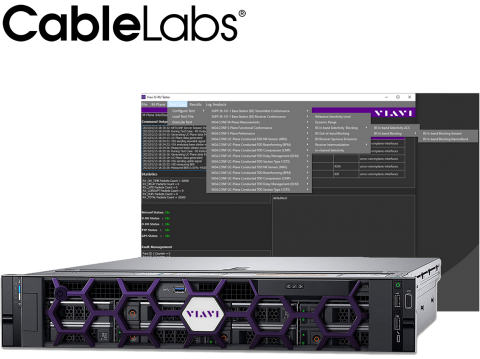
CableLabs is a not-for-profit innovation and R&D lab that creates global impact through its member companies around the world. CableLabs was selected as the host lab and provided expert staff and access to a test lab for the 2022 5G Challenge Event. With a state-of-the-art facility and collaborative ecosystem with thousands of vendors, CableLabs delivers impactful network technologies for the entire industry. The 5G Challenge builds on CableLabs’ experience as an independent arbitrator and host of industry interoperability events, including Kyrio’s experience as the sole O-RAN Alliance OTIC Testing and Integration Lab in the Americas. Kyrio is a subsidiary of CableLabs.
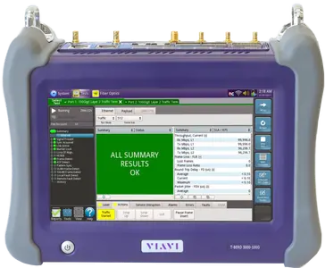
During Stage Two, the host lab provided an emulated 5G test system. During Stage Three, the host lab provided two Standalone (SA) 5G cores, and two virtualized Radio Access Networks (vRAN).
For more information on the host labʼs 5G systems see the “Host Lab Specification” document. The host lab can emulate up to 128 UEs and 128 connections across a 10Gb/s interface. The 5G core can support up to 10,000 subscribers and connections
Winners
Stage Two – Emulated Integration Prize
After evaluating Stage Two testing results, the 5G Challenge selected the following contestants to receive an Emulated Integration Prize of $150,000 each:
- CU: Capgemini Engineering; Mavenir Systems, Inc.; Signal System Management
- DU: Radisys Corp.
- RU: Fujitsu Network Communications; Mavenir Systems, Inc
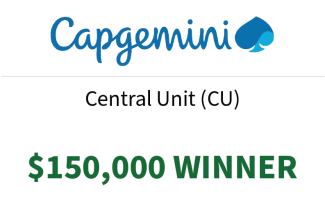
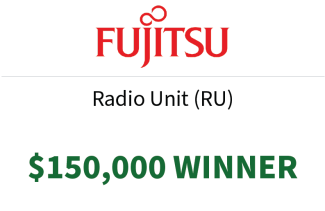

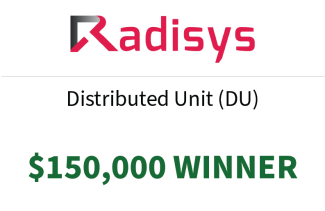
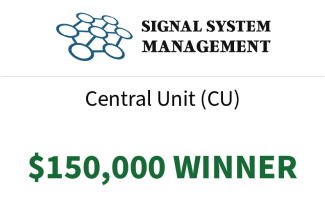
Stage Three – Network Integration Prize
After evaluating Stage Three testing results, the 5G Challenge selected the following contestants to receive a Network Integration Prize of $250,000 each:
- CU: Capgemini Engineering
- DU: Radisys Corp.
- RU: Mavenir Systems, Inc.
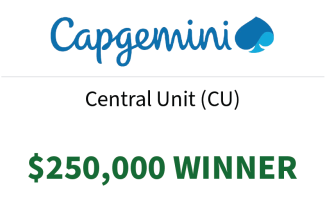
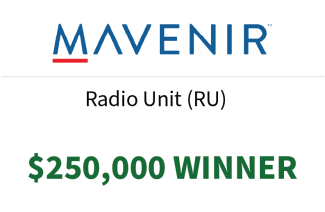
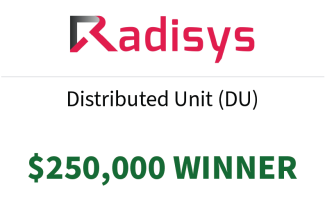
Best Software Bill of Materials (SBOM) Prize
SBOMs facilitate improved security via vulnerability management by identifying dependencies, patch requirements, license requirements, and risk of cyberattack. 5G Contestant SBOMs were evaluated for completeness, intelligibility, depth of dependencies listed, disclosure of known unknowns, and compliance to SBOM format standards.
A $200,000 prize was awarded to Radisys Corp. in recognition of their comprehensive, informative, and high quality SBOM, which went above and beyond minimum requirements to report vulnerability and risk. See the NTIA website for additional SBOM information.
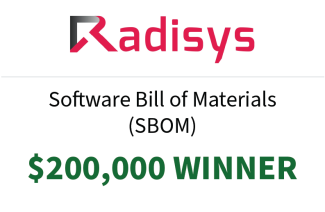
2022 Event Recap
Endorsement Disclaimer: Certain commercial equipment, software, and services are mentioned on this website to describe aspects of the ways that they may be used in industry. The mention of such entities should not be construed as any endorsement, approval, or recommendation, or as a statement that they are in any way superior or more noteworthy than similar entities that were not mentioned.

